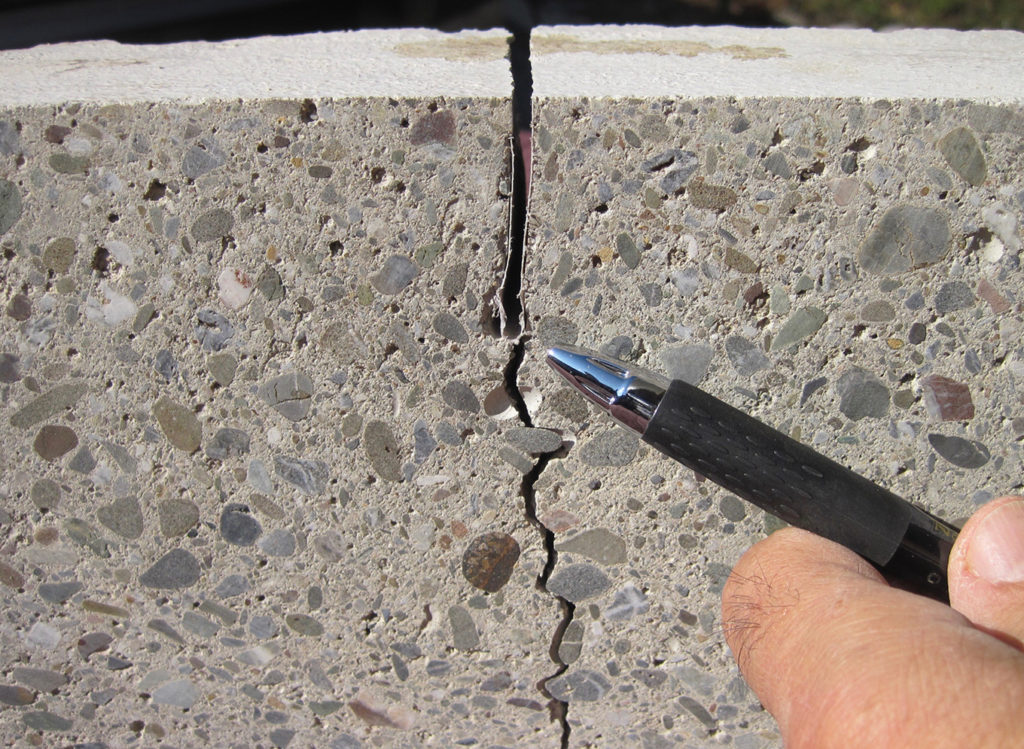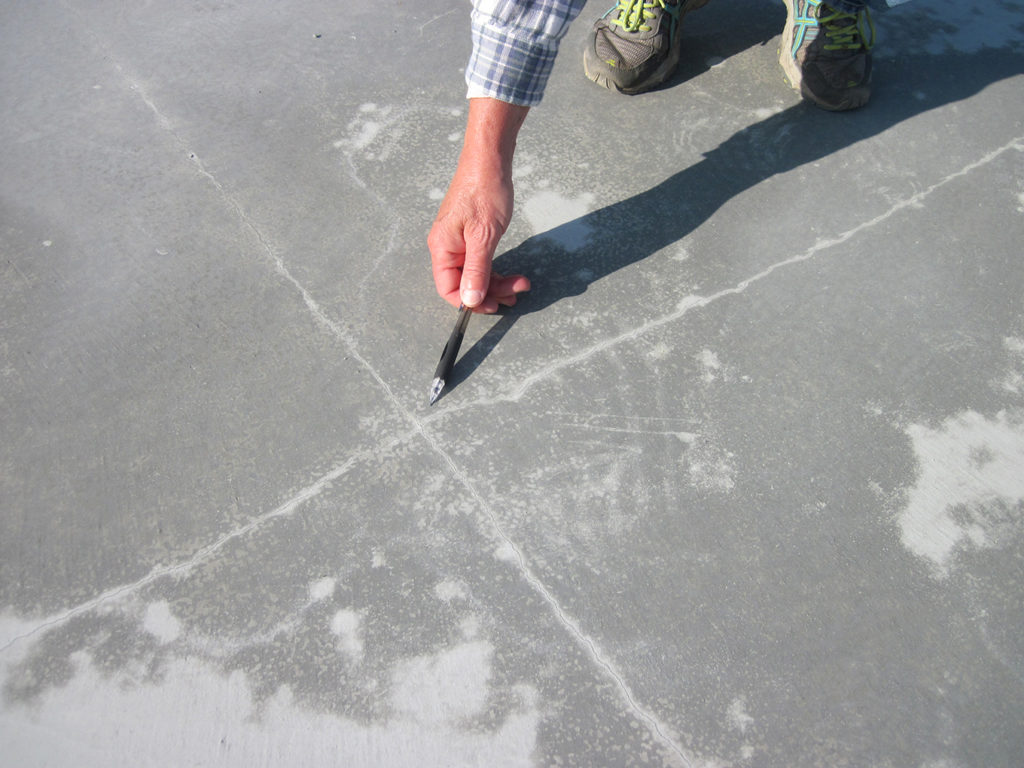Contraction Joints in Residential Slabs Using a New Method
By Harvey Haynes, Haynes & Associates LLC; Oakland, CA
Introduction
The cracking of concrete slabs is unsightly and has long been a frustration for concrete contractors who receive complaints and callbacks from homeowners. Concrete, by its nature, will contract due to thermal cooling and drying shrinkage. This material behavior causes concrete elements to decrease in volume. When these elements are restrained from moving to a smaller size, tensile stresses build and concrete cracking may occur.
ACI 3321 provides minimum construction requirements for controlling cracks in slabs on ground. The key word here is “controlling” — cracks cannot be eliminated, but concrete contractors can minimize their frequency and size. It is a choice between having cracks at known locations, which are at contraction joints, and having the cracks more visible at random locations. The objective is to have the cracks occur at contraction joints.

The term “contraction joint” may be new to some. It is the preferred term by the ACI — used in place of the common term “control joint.”
The criteria in ACI 332 for contraction joints are summarized as follows:
(a) Joints shall be formed, sawed, or tooled.
(b) Joint spacing shall follow limits given in a table.
(c) Slab sections defined by contraction joints shall have an aspect ratio no greater than 1.5.
(d) Joint depth shall be a minimum of 1/5th of the slab thickness for inserted, tooled, or early-entry sawed joints, but not less than one inch deep or 1/4th of the slab thickness for conventional wet or dry sawed joints in hardened concrete.

The commentary to the contraction joint section says that experience with early-entry or conventional saw cutting of concrete tends to limit the development of cracks to the contraction joint location. This statement has been the conventional view, but times are changing. Today, saw cutting concrete is more labor intensive and expensive due to OSHA restrictions. The health risks of airborne silica are so great that OSHA issued a new standard, 1910.10532, in 2017 to advance the protection of all employees exposed to airborne silica. Hydrated cement paste, and sometimes aggregate in concrete, contain silica. When concrete is abraded and the dust is airborne, the silica can enter the lungs, produce inflammation, and cause a form of lung disease called silicosis. Satisfactory compliance with this OSHA standard requires a combination of equipment-shrouding technology, respirator masks for employees, and in some cases health monitoring, to maintain safe exposure levels. These actions can be expensive, time consuming, and problematic in their effectiveness.
Analysis of Contraction Joint Methods
There are limitations to each of the three methods mentioned in ACI 332. Sawed joints have been discussed in light of the silica-dust problem and expense. Tooled joints are limited by the depth of groove and by the size of slab (however, tooled joints are the common method for small slabs, such as sidewalks, patios, and driveways). Inserts are applicable to medium-sized slabs, such as residential house slabs. A common insert method involves installing strips of rigid plastic into fresh concrete. This method has limitations because, in manually installing the strips, it is easy to place them too high or at an angle in the concrete, and it is difficult to maintain straight lines because each strip is 10 feet long.

An objective study of the various methods for use in residential house slabs shows that inserts have advantages over the other methods.
- Insert joints do not produce silica dust. The potential of being fined for an OSHA violation because of silica is eliminated.
- Insert joints are installed in fresh concrete, eliminating the problem of timing. This is significant when compared to sawing joints, where you can act too early, which will ravel edges, or too late, which means cracks have already appeared. Technically, joints installed in fresh concrete have the best chance of performing their intended function, that of mitigating random cracks.
- The installed cost of inserts is considerably less than that of sawed joints.
This analysis reveals that, in their efforts to improve on current methods, concrete contractors should work with the insert approach.
Innovation
A new method exists to install contraction joints in residential slabs. The approach is to embed a strip of polymer tape into fresh concrete using a manually operated tool that is pushed and pulled across the slab. This method has the trade name of Trak Joint®3 (Fig. 1), and several advantages set this method apart from other contraction joint methods.
- The tape adheres to the walls of the crack (Fig. 2) and therefore blocks rainwater from wetting the subbase soil.
- The tape retards moisture transition moving from the ground to under-floor coverings.
- The tape provides a curing environment for the concrete faces in the joint.
- Should epoxy or polyurethane be used to fill the joint, less material is needed because the tape creates a bottom to the joint, and the width of the joint is narrow.
A possible downside to the method is the final appearance of the joint, which is that of an intentional crack (Fig. 3). After thermal contraction and drying shrinkage, however, the width of the joint will be a maximum of 1/16th inch, if joint spacing is done properly. For residential house slabs, floor covering is typically used, which hides the joints.
Summary
The insert method of forming contraction joints improves the practice of mitigating random cracks in slabs. The Trak Joint method was unveiled during the Concrete Foundations Convention 2019 in Denver, Colorado. The Trak Joint method’s reliability for minimizing random cracks is a major advantage, as is minimizing workers’ high-risk exposure to silica dust and preventing a citation from OSHA. Contractors have found that using Trak Joints has a significant cost savings over the other contraction joint methods.
References
- ACI 332-20, Code Requirements for Residential Concrete, American Concrete Institute. Farmington Hills, MI, 2020.
- OSHA 1910.1053, Respirable Crystalline Silica.
- www.trakjoint.com.









